VOLUME 37, ISSUE 2
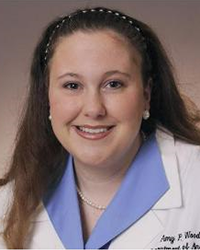
Amy P. Woods, M.D., FASA
Associate Professor of Anesthesiology
Department of Anesthesiology and Pain Management
The University of Texas Southwestern Medical Center
Dallas, TX
On the Shoulders of Giants: Legends of Texas Anesthesiology Series:
A.H. “Buddy” Giesecke, Jr., MD (1932-2011)
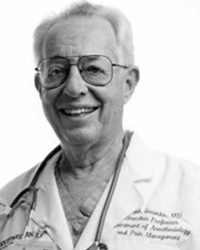
Figure 1 A.H. “Buddy” Giesecke, Jr.,
MD, 2008. Photo by Chad Evans Wyatt.
From Dr. Giesecke’s files.
A.H. “Buddy” Giesecke, Jr., MD, had a remarkably productive career in anesthesiology that spanned nearly five decades. His numerous leadership roles in organized medicine and achievements in obstetric anesthesiology and trauma gained him some modest prominence over his lifetime, but it was his warm and gentle spirit and his encouraging mentorship that inspired those who had the privilege to know him.1
Buddy was born in 1932 in Oklahoma City, son of Captain Adolph Hartung “Ade” Giesecke and Goldia Linn. He spent his early years on Rancho Felix, outside of Cotulla, Texas, where Ade was the ranch foreman. In May 1941, in the lead up to the United States entering World War II, Buddy’s father was called into active duty and mobilized to the Philippines. Ade was one of the unfortunate soldiers on the infamous Bataan death march, later dying in a prison camp in 1945. So, Buddy grew up in San Antonio, Texas to be close to his father’s family. He was inspired to pursue a career in medicine through the influence of his uncle, Dr. Carl Giesecke, who Buddy knew as “Uncle Doc.”
After graduating from Texas Military Institute, Buddy enrolled at The University of Texas at Austin, breaking a long-standing family tradition of Gieseckes who had attended Texas A&M University. There, he became reacquainted with the love of his life, Miss Veronica “Roni” Morel, whom he would later marry.
Buddy matriculated to The University of Texas Medical Branch in Galveston, graduating in 1955. He was commissioned as a 2nd Lieutenant in the U.S. Army and completed his internship at William Beaumont Army Hospital in El Paso, Texas.2 In an interview, Buddy jokingly said he chose the His goal, when he graduated from medical school, was to become a pediatrician. While serving as a flight surgeon, his commanding officer would occasionally assign him to the pediatric clinic. There he discovered that, while he really enjoyed working with children, “the parents just drove me crazy!”3 He turned to anesthesiology because it combined all the things he had enjoyed as an aviation medical officer: the science of barometric pressure, gases, oxygen, and breathing. He learned of a developing anesthesiology residency program at Parkland Hospital in Dallas, Texas that was under the leadership of a young and charismatic chairman, Dr. M.T. “Pepper” Jenkins. Due to his budding interest in trauma medicine at Parkland Hospital he developed a national reputation for the care of trauma patients. This was a natural choice for Buddy’s training.
He joined the faculty of The University of Texas Southwestern Medical School in 1963, the same year chance would have him involved in one of the most high-profile events in the world, providing the initial trauma care following the assassination of President John F. Kennedy (JFK) in Dallas. After assisting with the initial resuscitation attempts of JFK, Pepper triaged Buddy to care for Governor John Connally, who had also been injured in the shooting. Over the years, Buddy gave countless interviews and talks on the events of the day. When asked if he believed any of the controversy surrounding the assassination, he said, “the conspiracy theories are bunk. I believe there was one gunman.
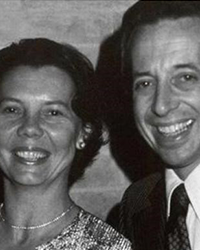
Figure 2 Roni and Buddy attend a residency
program function, 1975. From UTSW
departmental files.
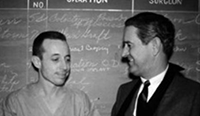
Figure 3-Buddy talks with Texas Governor John Connally, whose right arm is still in a sling following his injury during the JFK assassination. From UTSW departmental files
Buddy briefly left Dallas in 1973, to become the founding chairman of the Department of Anesthesiology at The University of Texas at Houston, but returned to Dallas after just a year. Though short- lived, he was very proud of his time in Houston, establishing the residency training program there and integrating the anesthesiology departments of three hospitals: Hermann, MD Anderson, and St. Joseph. Eventually, on April Fool’s Day, 1981, Buddy succeeded Pepper as the chair of the Department of Anesthesiology at UT Southwestern. His eleven years as chairman of that department were characterized by growth, with the residency program size nearly doubling, as well as expansion of operating rooms at all clinical sites, and the opening of a new hospital, Zale- Lipshy University Hospital.2 Buddy relinquished the role of chairman in 1991, but he remained active in the department until 2005. When he retired, he was appointed by the Board of Regents as Professor Emeritus, an honor recognizing his enthusiasm for teaching, for which he was extremely proud.
His professional interests in anesthesiology included trauma, obstetrics, and, later, anesthesia history. Over the years, he achieved relative fame in each of these areas through his research, innovation, and service to professional organizations. Buddy was an early champion of endotracheal intubation for obstetrical surgeries requiring general anesthesia at a time when “cyclopropane under the mask” was still a relatively common practice.6 Additionally, he and colleague, Dr. Richard Morris, were among the first to describe the potentiation of neuromuscular blockers by magnesium infusion in pre-eclamptic parturients.7

Figure 4-Buddy, right, positions Timbo, a lowland gorilla, for a CT scan in 1998. He is assisted by Dr. Mike Holub, chief resident in anesthesiology at the time. From UTSW departmental files.
Buddy was editor of the journal Traumacare and served as president of the International Trauma Anesthesia and Critical Care Society, winning the organization’s Career Achievement Award in 2003. He served as president of the Southern Society of Anesthesiologists in 1972.
Buddy spoke of his work with the Dallas Zoo and his “most interesting patient,”8,9 a western lowland gorilla named Jenny. Buddy was also president of the Texas Society of Anesthesiologists (TSA) in 1995-1996 and was awarded with the TSA Distinguished Service Award in 2003. He served as a member of the Board of Trustees for the Wood Library-Museum of Anesthesiology for many years and was also active in the Anesthesia History Association. In April 2011, just eight months before he died, he delivered the first ever Patrick Sim Memorial lecture.3
With all the recognition and accolades, Buddy remained warm and humble, encouraging to mentees, and pushed others to be the best versions of themselves.1 Buddy once said the best piece of advice he was ever given was from Pepper Jenkins: “Put the patients first. Second, you teach the medical students and residents the very best way that you possibly can, demanding the highest level of excellence that you can demand. Last, you do research with whatever energy and resources are left after you’ve accomplished the first two. Buddy definitely put this advice into practice daily.
Buddy and Roni had four children: Carl, Suzanne, Martin, and Hans. Martin followed in his father’s footsteps becoming an anesthesiologist and later serving as the President of the Texas Society of Anesthesiologists in 2012-2013, just seventeen years after his father. The Gieseckes remain the first and only family with two generations having served as TSA President.
A.H. “Buddy” Giesecke, Jr., MD, died on Christmas Eve 2011. He was certainly a giant in Texas anesthesiology and there will never be another like him.
Sources Cited
1. Joshi GP, Hein HAT. A. H. ‘Buddy’ Giesecke, Jr.: An Inspirer. ASA Monitor 2012 May; 76(5):p 60-61.
2. Giesecke AH, ed. Anesthesiology at the University of Texas Southwestern Medical Center at Dallas: The First Fifty Years. Dallas, TX: Department of Anesthesiology and Pain Management at the University of Texas Southwestern Medical Center at Dallas; 2001.
3. Giesecke AH. An interview with A.H. “Buddy” Giesecke Jr, MD. Interview by Amy P Woods and Babatunde Ogunnaike. Bull Anesth Hist. 2013 Apr;31(1):14-7. PMID: 24205752.
4. Giesecke AH. Dr. Adolph Giesecke Oral History. Interview by Stephen Fagin. Oral History Collection, The Sixth Floor Museum at Dealey Plaza, 2010. https://emuseum.jfk.org/objects/32331
5. Peavy JE. Three Patients at Parkland. Tex Med. 1964;60:60-74.
6. Giesecke AH. General Anesthesia for Obstetrics. Dallas Med J. 1967;53:476.
7. Morris RE and Giesecke AH. Potentiation of Muscle Relaxants by Magnesium Sulfate Therapy in Toxemia of Pregnancy. South Med J. 1968 Jan;61:25-28.
8. Giesecke AH. A Most Interesting Patient: The President’s Address. Audio Digest Foundation. Annual Meeting of the Southern Society of Anesthesiologists, New Orleans, LA, 1972. https://www.woodlibrarymuseum.org/famous/jenny/
9. Giesecke AH. An Exotic Anesthetic Take from a TSA Legend: In Memoriam A.H. “Buddy” Giesecke, Jr., MD. TSA Bull. 2013 Jul;25(2).
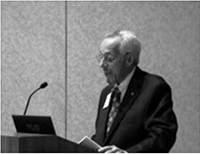
Figure 5-Buddy addresses the Anesthesia
History Association as the first ever Patrick
Sim Memorial lecturer, April 2011. From Dr.
Giesecke’s files.

